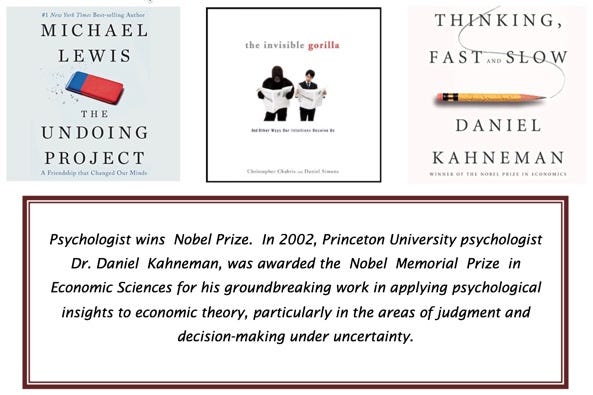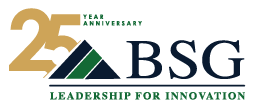“When flying a plane with low visibility, you need to use instruments”

The Covid pandemic has brought complete free-fall to much of the employment marketplace in the U.S. and globally — more than 36 million jobs lost in less than 60 days between March and May, 2020, and and unemployment rate that jumped from below 4% at the beginning of March, to almost 15% by the beginning of May.
While this is a tragic loss of earnings power for individuals, families, and the economy, selective hiring is still happening. In particular at the executive levels. Why?
Many companies had stocked their senior leadership teams with expansion-skilled leaders to capitalize on the longest economic expansion in modern history stretching from the Great Recession in 2008 and 2009 through to early 2020. These leaders were talented at growth. Now, some companies are realizing they need a better balance of wartime leaders vs. peacetime. CEOs, CFOs, operations and sales leaders are all functions that are seeing significant turnover.
A trend toward “commuting” executives had grown popular, with the ease and relative inexpensiveness of air travel and technology. A growing number of executives “commuted” to work each week from other cities and other parts of the country. Given the strain on air travel, this long-distance commuting convention is also getting strained. And some companies — and executives — are looking to bring their senior leadership teams closer to home. Not all of these executives want to relocate however, and are therefore deciding to re-orient their career closer to their families.
Some executives who were at the latter stages of their career had been fine with “extending their retirement runway” while companies were growing. However, faced with wartime headwinds, and the inevitable tough times that come with a recession, they’ve determined that the stress & uncertainty wasn’t how they wanted to spend their last career chapter, so have notified their boards that they are accelerating their transitions out of the business.
So, the goal — whether in person interviewing or virtual — is all around how to do the best assessment you can given the limited amount of interaction any hiring process will allow.
Here are the top 10 actions to optimize the probability of making the best “virtual hire” for your new virtual workplace in the new normal:
1. You can’t manage what you can’t measure: Build a scorecard of deliverables for 1st year for the position, and use it as “north star” in all interviews
- Get all company stakeholders to contribute their top 3 deliverables for this position to be achieved in the first 12 months on the job
2. Don’t allow “instinct” or “blink” decision-making to rule out (or in) a candidate. There is now all too much research that proves that the best hiring is done slowly. Ergo the expression, “hire slow, fire fast.”
- Even a Nobel Prize granted acknowledging the discovery & importance of “thinking slow” via human psychology
- Beware the counter intuitive nature of assessment and hiring decisions.

Especially when interviewing a candidate virtually, note the following frequent facts:
- Just as the saying goes, “the camera adds 10 pounds,” and video interviewing saps at least 25% of a candidate’s perceivable energy
- Don’t judge to harshly the background/environment behind a candidate that appears in the camera’s field of view
3. Human tendency is to hire resumes, and fire people
- When flying a plane with low visibility, you need to use instruments”
- Use assessment tools to assess —
- CULTURE FIT/compatibility with the team with whom they’ll be peering. For more on ours, see here, https://www.bostonsearchgroup.com/talent-toolbox/culture-fit-survey
- CHEMISTRY FIT/personality compatibility. For more on our psychometric instrument & applications, see here, https://www.bostonsearchgroup.com/talent-toolbox/team-fit-analysis
NOTE: using them right is to use them for further discovery and only then validation or invalidation. Tools in themselves will not deliver a clear-cut answer. These traits may exist within a candidate but their actual associated behaviors may not manifest in their interpersonal interactions.
4. RECORD all interviews Why?
- Allows review
- Preserves accuracy of memory of how a candidate responded to specific questions
- Allows for sharing
- Facilitates follow up
NOTE: You need to get written permission, or get permission granted on the recorded video. Check the laws in your state for specifics.
5. Give a homework assignment/case study. For this exercise, you:
- Build a case study that based on your business, and the role in question for which you’re hiring.
- Build it with “here’s the problem, some analysis, and we’re looking for how you would solve the problem.”
- Allow them to come back after receiving the brief, and “buy a vowel” — allow them to ask for additional supporting information they feel they may need to deliver a meaningful solution. Note… the questions they ask are very important in considering their candidacy. The questions they ask will tell volumes about how a candidate thinks before they make a decision
- What you’re looking for and evaluating from the exercise
- Critical thinking skills
- Presentation skills
- Executive presence
- What you’re NOT looking for…
- free consulting. So don’t make the exercise take more than 2 or 3 hours to prepare
- presentation is 30 minutes delivered with a Powerpoint or pdf they can “share their screen” and deliver,
- with 15–30 minutes of Q&A by company’s interviewing panel (the stakeholders & hiring authority involved in the position in question
6. “Go Native” — find tools to interact over time. Find an online game, passion, hobby or other, and engage with the finalist(s) over several days or a week. Background on this: we used to advocate our clients “take a trip” with finalist candidate(s). Fly to another office together, even better drive to a meeting, or a plant/facility. Spending time next to each other in a car or airline seat speaks volumes to how a candidate thinks, behaves, socializes, and entertains.
- This could be a fantasy sports league, or online backgammon, scrabble, chess or other. Should be something that. There are a number of games that are family games that also can act as reasonable surrogate.
- For the younger or more adventurous, check out a game like this and see if you can insert the candidate into a team environment. https://www.jackboxgames.com/push-the-button/
- Set up a virtual dinner. Cocktails isn’t enough. Nor is lunch really it. And if a spouse or significant other they’d like to have participate, invite them too. The “pre-offer” dinner has been in the executive search toolbox for decades. And now the opportunity exists to see how it goes in the “new normal.”. Keep in mind, the executive you hire is going to need to be adequate at using these very same tools to hire/build out their teams, so great opportunity to see how they’ll manage in this sort of setting.
7. REFERENCE DEEPLY
- Do at minimum 6, with at least 3 prior superiors
- Take a “360” referencing approach (superiors, peers, subordinates, & customers or board directors)
- Use rating/ranking questions… “how do you rank the candidate on X, scale of 1–5, and you can pick 3,” using the scorecard created and any remaining concerns as key areas to probe and explore
- Don’t skip background check referencing, In particular
- Credentials (educational degrees, certifications like CPA etc.)
- Criminal
- Credit where legal
- Employment where you haven’t spoken with a reference to confirm they worked there, title, and dates align with their resume
8. Nothing beats in person where possible
- When best to take the plunge? Pre-offer for sure. Learning how someone behaves in 3 dimensional space can’t be beat.
- It can be outdoors in a park at opposite ends of a park bench.
- Apple’s Steve Jobs was famous for going on a walk around the neighborhood of either the office or home with team members that would last an hour or more.
- Many golf courses are open with limitations, as are tennis courts.
- Timing:
- If relo:
- offer to have hiring authority fly to interview candidate one-on-one in their current location
- if that goes well, ask candidate to fly to the company to meet with other key stakeholders
9. Use an onboarding health monitoring tool As if it isn’t hard enough to be the new kid in class on the first day of school, imagine having to do that in a “virtual workplace.” Everyone knows everyone already, and being the “new kid,” no one wants to invest the time, effort or energy to help get the new hire get smart.
- Find a tool that allows a regular feedback loop to be created regarding the new hire’s onboarding progress
- Best practice is to have the tool monitor and diagnose on a monthly basis
- Should last at least 6 months
- Look for “surprise signals” in the feedback
For more on ours, see https://www.bostonsearchgroup.com/talent-toolbox/executive-integration-assessment
10. Combine health monitoring tool with a team integration & acceleration coach
- Cost of coaching is rounding error compared to cost to hire or cost of replacement
- Often, coaching isn’t just for the new executive hire, but as much for the team around assimilation, personality integration, strategic intent, establishing early wins, etc.
Interested in learning more? Watch our most recent webinar on Virtual Hiring.




